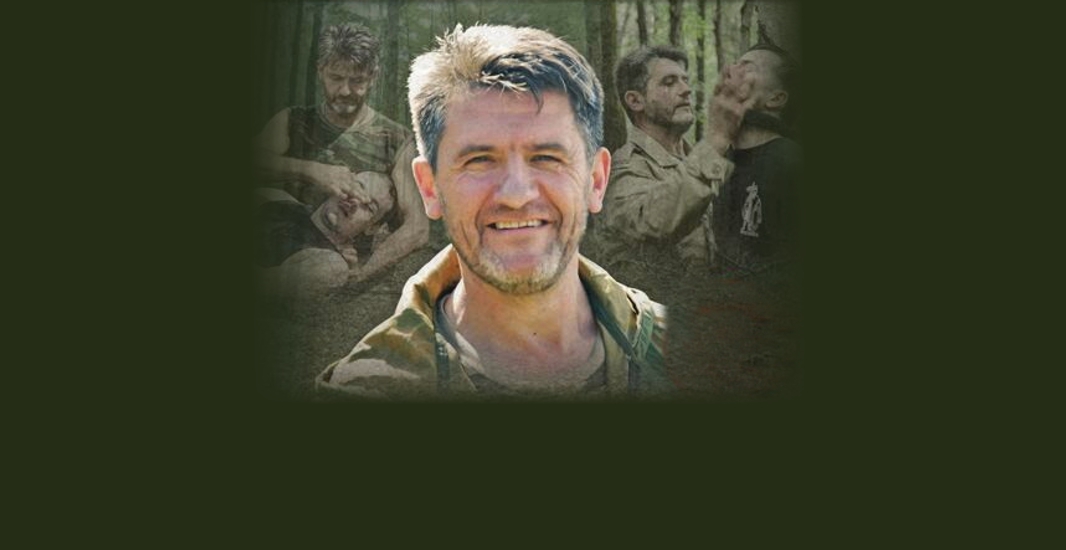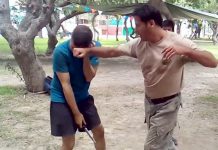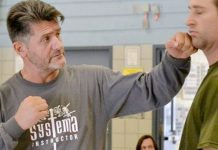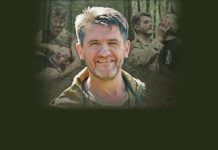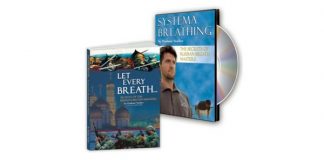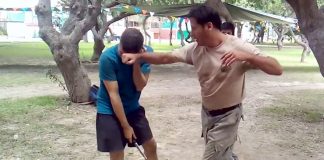When I observe students in class, at seminars, or when I evaluate instructors through the Systema Video Program (SVP), I see one most common limitation – tense shoulders and hips.
In this article, let’s look at the tense shoulders. We should understand how it seriously damages our moving and fighting potential.
1. Unfortunately, it is not obvious to many people that with tension-filled shoulders, we are not able to lift the arms freely or maintain good posture. Therefore, everything including balance, power, and precision will suffer.
2. The sight of tense shoulders in a fight is a signal of your fear or nervousness. That unwillingly provokes more aggression.
3. Tense shoulders substantially reduce nerve conduction, and thus, reduce the sensitivity of your arms and hands.
4. With time, due to reduced circulation, tissues in the arms lose their suppleness. As a result, tension in the shoulders leads to “dry” forearms and small fists.
5. Tense shoulders cause faster fatigue and low endurance in a fight and in exercising.
6. Shoulders restricted by tension change our coordination of movement. Rather than smooth and steady movements, we get gaps of weakness. Practical judging of distance becomes distorted.
7. Shoulders held with tension give you a false sense of security. While it may feel strong to you, it is a fragile structure, easily destroyed in real confrontations.
8. Tension in the shoulder girdle tends to accumulate. As it builds up, it leads to potential injuries to all of the joints in the body.
How do we resolve this problem?
First, we have to notice that it exists. And second, we need to have the desire to correct it.
Of all the drills Systema offers, slow core exercises are the best for reducing and breaking up tension. Slow pushups with breathing (see Chapter 5 of Let Every Breath) are a great practice.
Start to remove tension from the shoulders with your breath as soon as you assume the pushup position, before you initiate movement. Gradually lower through all parts of the range and overcome tension and irritation smoothly. Watch for the weakest element – the most challenging parts of the range on the way down and on the way up.
Combine slow pushups with shoulder rotations. Rotate them forward and back on the way down and on the up. If you are not able to rotate your shoulders as you are doing pushups, start with moving them up and down, forward and back, and progress to rotations as your skill improves.
Practice pushes at a close distance. Use one and both arms in a smooth and precise way to control your partner. Gradually progress to strikes. Make sure there is no rebound impact of your pushes and strikes into your shoulders. (see Chapter 7 of STRIKES: Soul Meets Body)
Another good drill is stick circles. Hold a long stick with both hands as wide apart as possible. Slowly rotate the arms over your head and as far as back as you can for a good stretch, but no strain.
Moving and stretching across the ground is also very helpful. Go up and down from the standing position to the ground and back up without leaning on your hands, move and roll across the ground in various directions without using your hands. Try to keep your movements smooth, your shoulders tension-free, and your back straight when the position allows it. This makes the body softer and stronger, more agile and collected.
Do postural exercises to keep the shoulders down and back. Keep your pectoral muscles stretched and your rhomboids strengthened. Do not over-pump your biceps and keep the triceps toned. Keep your back straight not just in training, but throughout the day. Watch your posture all of the time, while walking, standing, driving, sitting at a computer, eating, even sitting on the couch.
An excellent way to reduce shoulder tension and improve posture is the combative body health practices. The bodyweight massage and tissue annealing can be done every class, as shown on video.
See The Combative Body part 2 on DVD or Downloadable film.
Keep in mind that most sports instigate the desire to win, and that inevitably leads to tension in the body, especially neck and shoulders. Negative emotions and stress also make us draw the head and shoulders in.
Stay aware, breathe, relax and look at the bigger picture. As we say in Systema “Train hard, breathe easy.”

